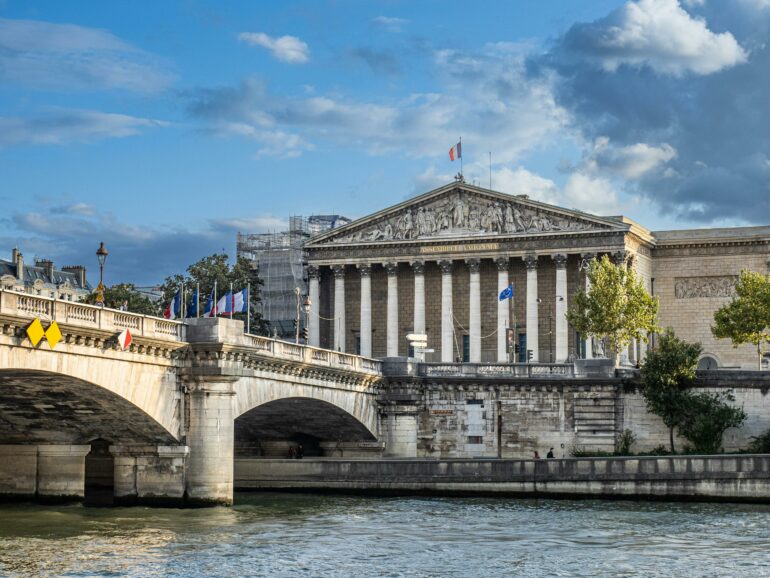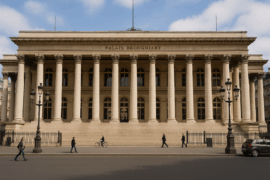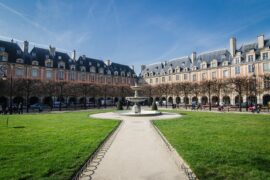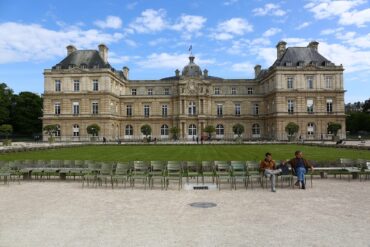Introduction to the Palais Bourbon: A Symbol of the Republic
The Palais Bourbon, located in the 7th arrondissement of Paris, is much more than a historical building. It embodies the beating heart of the French Republic, housing the National Assembly since the French Revolution. For us citizens, it represents a place where the laws that govern our daily lives are debated and passed, reflecting the democratic and republican values of our nation.
By exploring the significance of the Palais Bourbon, I’ve discovered a building that, beyond its political role, is a living testimony to the history of France. Every stone and sculpture tells a story—of the transition from monarchy to republic, of the fight for civil rights, and of the political evolution of our country. Its presence along the Seine also makes it an essential part of the Parisian landscape, attracting thousands of visitors each year.
In this article, I invite you to explore this architectural masterpiece with me, trace its rich historical past, and understand its essential role in French political life. Get ready to discover everything you need to know about the Palais Bourbon in Paris.
History of the Palais Bourbon: From Its Origins to Today
The history of the Palais Bourbon begins in the early 18th century, when it was commissioned by Louise Françoise de Bourbon, daughter of Louis XIV, to serve as a lavish residence. Designed by the Italian architect Giardini and completed in 1728, the palace reflects the architectural style of the time, with its elegant façades and formal French gardens. It quickly became a symbol of power and the wealth of the French nobility.
With the French Revolution, the Palais Bourbon underwent a radical transformation. In 1795, it was chosen to house the Council of Five Hundred, one of the two legislative chambers of the Directory. This decision marked the beginning of its role as the nerve center of French politics. Throughout various regimes—from the Consulate to the Empire and finally the Republic—the palace retained its legislative function, bearing witness to the country’s major political upheavals.
Today, the Palais Bourbon is inseparable from the National Assembly, which it has hosted since 1798. It continues to evolve, adapting to contemporary needs while preserving its rich historical heritage. To me, it is fascinating to see how a place can survive centuries and remain central to the political and social life of a nation.
Architecture of the Palais Bourbon: A Neoclassical Masterpiece
The architecture of the Palais Bourbon is a perfect example of the neoclassical style, known for its elegance and simplicity. Upon entering the palace, I’m immediately struck by the grandeur of its façade, dominated by a colonnaded peristyle with Corinthian columns reminiscent of ancient temples. This architectural choice is no coincidence—it symbolizes the continuity between the values of the Republic and those of ancient democracies.
Inside, the Palais Bourbon reveals a wealth of artistic and decorative details. The reception rooms are adorned with frescoes and sculptures depicting major episodes of French history. The chamber of debates, with its semi-circular seating and finely crafted wooden furnishings, is an awe-inspiring space where deputies gather to discuss the law. I’m captivated by the idea that these walls have witnessed passionate debates and historic decisions that have shaped our country.
Beyond its political function, the Palais Bourbon is also a site of architectural innovation. Regular renovations and modernizations allow for the integration of cutting-edge technology while respecting the historical integrity of the building. For me, this harmony between tradition and modernity is what makes the Palais Bourbon’s architecture truly exceptional.
Political Significance of the Palais Bourbon: Home of the National Assembly
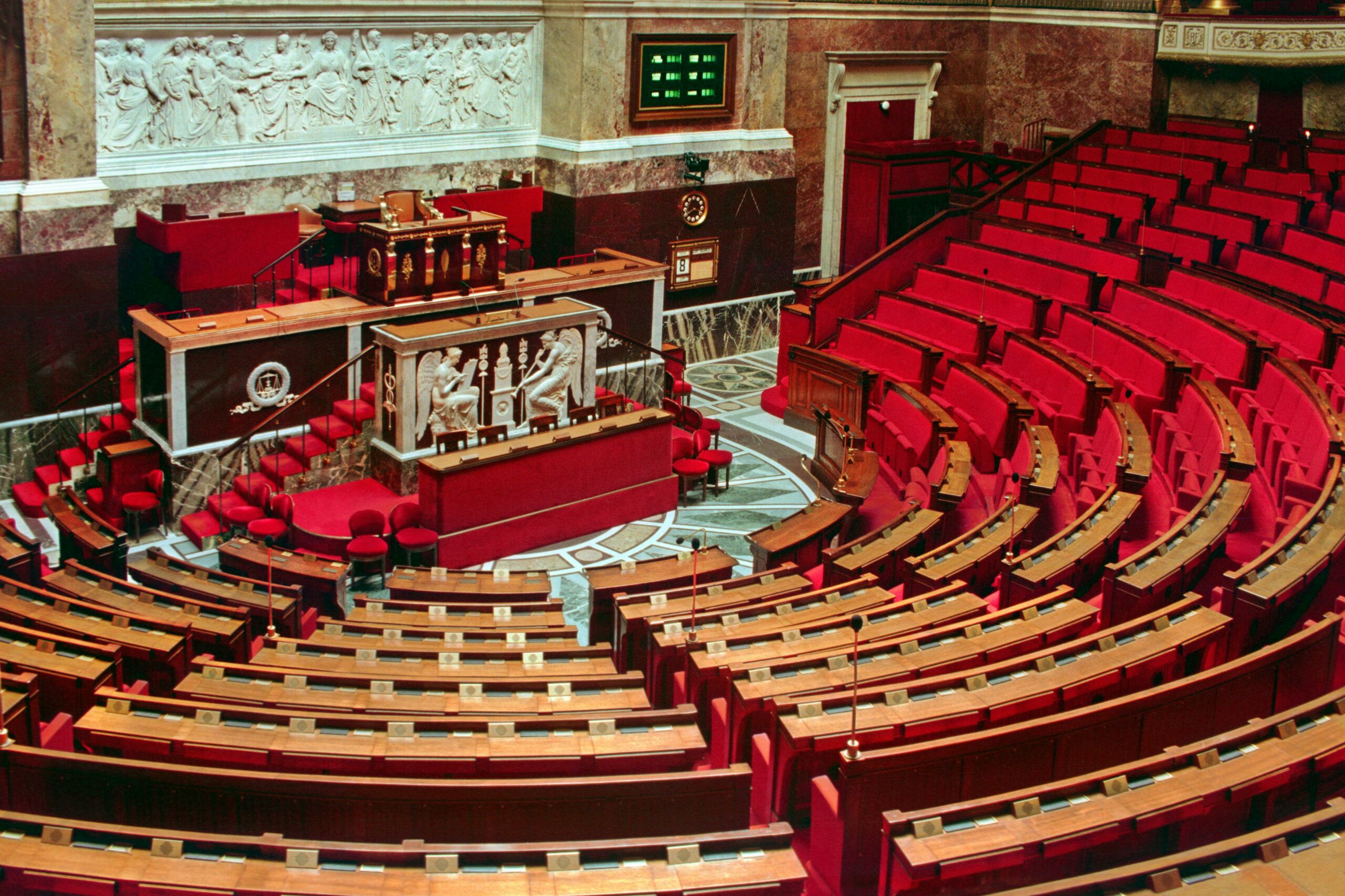
The Palais Bourbon is not only an architectural gem—it is above all the seat of the National Assembly, one of the two chambers of the French Parliament. As such, it plays a crucial role in the functioning of our democracy. It is here that the deputies, elected by the people, meet to propose, debate, and vote on the laws that govern our society. For us citizens, the Palais Bourbon is a symbol of our collective engagement in the democratic process.
The National Assembly, based in the Palais Bourbon, has several essential missions. It oversees the government, examines and votes on the state budget, and can even, under certain conditions, bring down the government through a vote of no confidence. These responsibilities make the Palais Bourbon a center of power and influence, where the country’s major political directions are decided. As a citizen, I feel the importance of this institution that acts on our behalf and for our collective well-being.
The Palais Bourbon is also the scene of often passionate debates between the various political groups represented in the National Assembly. These sometimes heated exchanges reflect the diversity of opinions and beliefs that characterize our society. To me, they are a living testament to the vitality of our democracy and the enduring significance of this emblematic place.
Historic Events at the Palais Bourbon: A Dynamic Political Stage
Over the years, the Palais Bourbon has been the setting for many key events that have shaped France’s political history. One of the most memorable was undoubtedly Victor Hugo’s speech in 1848, in which he eloquently advocated for the abolition of the death penalty. To me, this event symbolizes the Palais Bourbon’s commitment to human rights and dignity.
Other historic moments include fierce debates over major social reforms, such as the creation of the social security system or the legalization of abortion. These discussions, sometimes sources of intense tension, led to laws that profoundly changed our society. As a citizen, I am deeply moved by the Palais Bourbon’s role as the birthplace of courageous decisions that respond to the needs and aspirations of our time.
More recently, the Palais Bourbon has hosted debates on critical contemporary issues such as climate change, economic reforms, and social justice. These discussions underscore the ongoing importance of the palace as a forum for dialogue and decision-making. To me, it proves that the Palais Bourbon remains a dynamic political arena where the pages of our shared history continue to be written.
Visiting and Accessibility: Discovering the Palais Bourbon
Although it is a seat of power, the Palais Bourbon is also open to the public, allowing everyone to explore its history and architecture. Guided tours, available throughout the year, offer a unique opportunity to step behind the scenes of the National Assembly. By joining one of these tours, I was able to fully appreciate the importance and beauty of this iconic place.
During my visit, I was particularly impressed by the palace’s artistic richness. The paintings, sculptures, and antique furniture reflect the attention to detail and elegance that define the building. I also had the chance to attend a parliamentary session, which allowed me to witness firsthand how debates unfold in the chamber. This experience deepened my respect for the deputies’ work and the importance of their mission.
For those interested in visiting the Palais Bourbon, it is recommended to book in advance, as space is limited. The tours are accessible to all, including people with reduced mobility, and are available in multiple languages. I highly recommend this experience to anyone interested in history, politics, or simply art and architecture.
The Palais Bourbon in Popular Culture: Representations and References
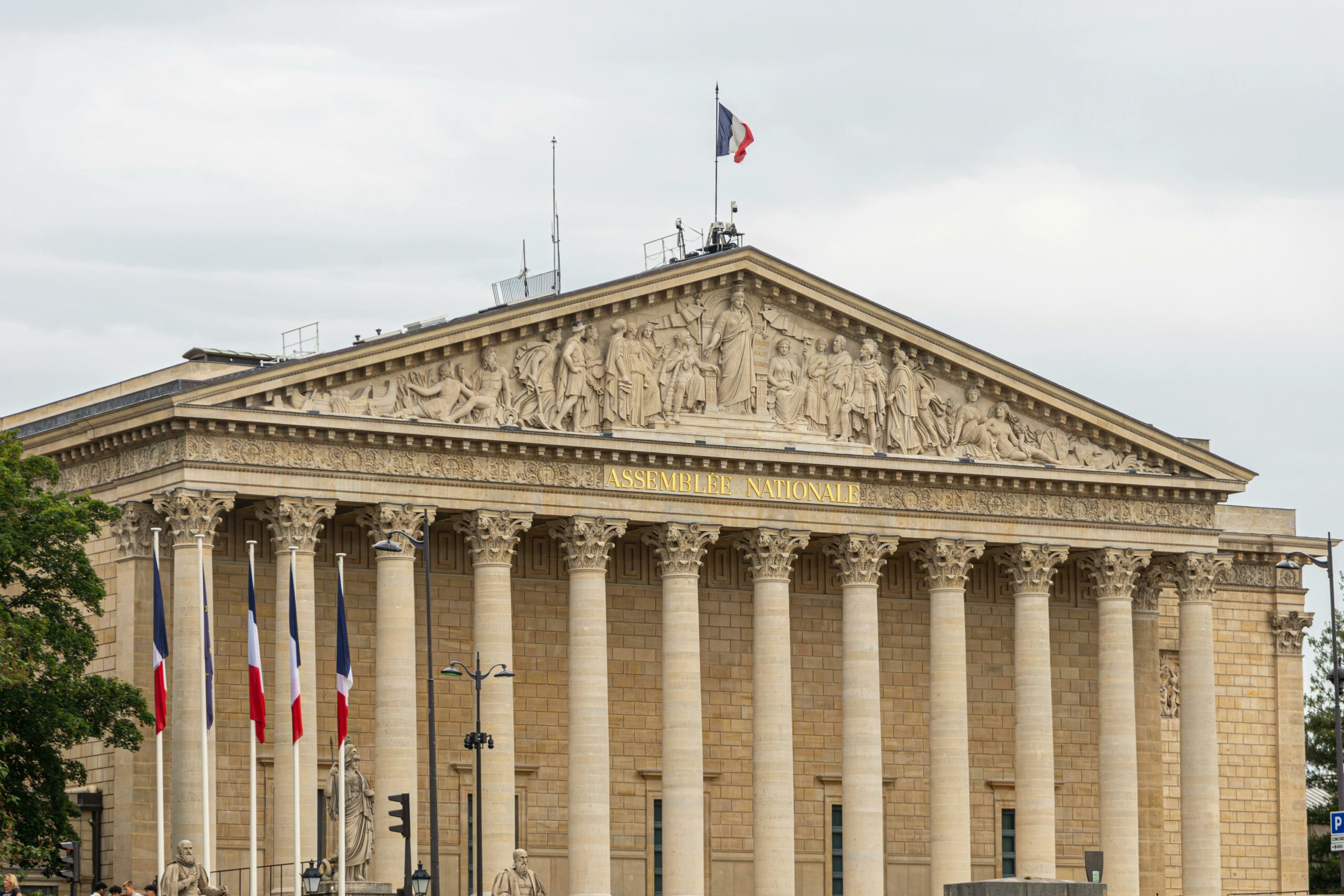
Due to its central role in French political life, the Palais Bourbon also occupies a prominent place in popular culture. It is often featured in films, TV series, and literary works, where it represents the symbol of legislative power and democracy. For me, these portrayals help strengthen the image of the Palais Bourbon as a landmark of our national heritage.
In cinema, the Palais Bourbon frequently appears in films dealing with politics or state conspiracies, adding dramatic and authentic depth to the narratives. Renowned directors have used its setting to depict scenes of tense negotiations or fiery debates. These works, by showcasing the palace’s grandeur and importance, captivate audiences and spark interest in its history and function.
Literature also makes frequent reference to the Palais Bourbon. Whether in fictional stories or historical accounts, these works highlight the palace’s influence on French political life. For me, they are a source of inspiration and reflection on the role of our democratic institutions. Beyond its official role, the Palais Bourbon has thus become a true character in French popular culture.
Conclusion: The Legacy of the Palais Bourbon in Paris
In conclusion, the Palais Bourbon is far more than a building. It is a living witness to the history of France, an architectural masterpiece, and the heart of our democracy. Throughout the centuries, it has adapted to political changes while preserving its rich heritage. For us citizens, it embodies the values of liberty, equality, and fraternity that lie at the heart of our Republic.
By exploring the history and significance of the Palais Bourbon, I’ve come to appreciate its central role in our society. From impassioned debates to transformative social reforms and eye-opening public visits, the palace remains a place of life and reflection. I encourage you to discover this symbol of our national heritage, which continues to shape our political future.
For those of you who wish to learn more about the Palais Bourbon, I invite you to visit its official website or join one of the guided tours. You’ll have the chance to walk in the footsteps of those who shaped our history and gain a deeper understanding of how our democracy functions. Don’t miss this opportunity to discover everything you need to know about the Palais Bourbon in Paris.

